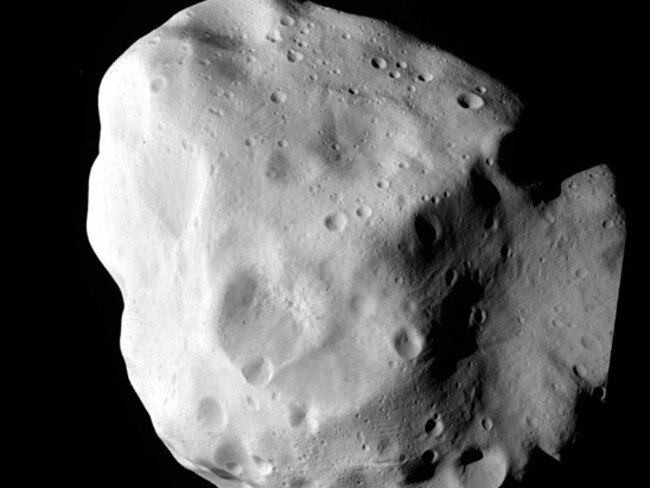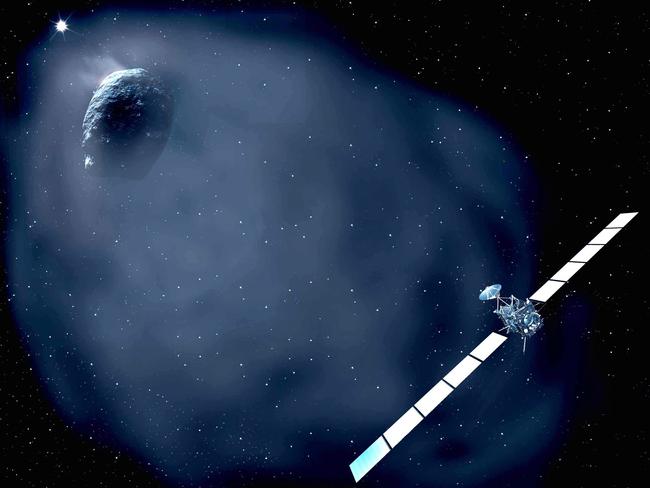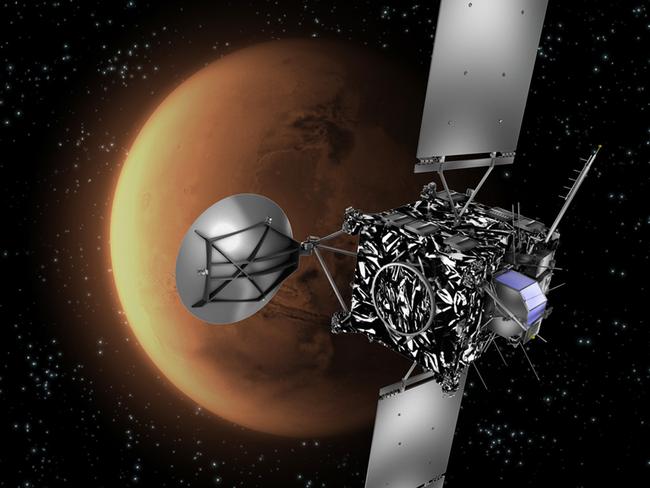European Space Agency probe Rosetta nears comet after 10-year trip
AFTER 10 years and nearly seven billion kilometres spent circling the solar system, a spacecraft will finally meet its destination — a comet.
AFTER 10 years and nearly seven billion kilometres spent circling the solar system, a spacecraft will finally meet its target.
European Space Agency’s probe Rosetta — a robotic spacecraft — has been in pursuit of comet 67P/Churyumov-Gerasimenko since being launched on March 2, 2004.
Next month it is scheduled to fufill its mission — the first in history to both orbit and land on a comet.
The latest images taken of the comet show it shaped like a kidney or a bean. Scientists said the comet’s heart certainly isn’t round.
OBSERVATORY FINDINGS: Mysterious sounds from space
SPACE JUNK: Australian light show

“Irregular, elongated, and structured shapes are not uncommon for small bodies such as asteroids and comets,” the Max Planck Institute for Solar System Research said in a statement .
“Of the five cometary nuclei that have been visited by spacecraft in close fly-bys so far, all are far from spherical.”
Rosetta is now less than 20,000km from the comet and on August 6 it will be just 100km away. This will be confirmed at ESA’s space operations centre in Darmstadt, Germany, at around 9.45am GMT (6.45pm AEDT) on August 6.
“This unique occasion will secure ESA’s place in history with the first spacecraft to rendezvous with a comet. Later, Rosetta will orbit the comet and, in November, it will become the first mission to send a lander to a comet’s surface,” ESA said in a statement.

Rosetta is undertaking the ESA’s most complex and ambitious mission. The lander is scheduled to touch down on the comet’s surface in November and remain in operation until the end of 2015.
“Scientists had to plan in advance, in the greatest possible detail, a 10-year trip through the Solar System. Approaching, orbiting, and landing on a comet require delicate and spectacular manoeuvres. The comet, 67P/Churyumov-Gerasimenko, is a relatively small object, about four kilometres in diameter, moving at a speed as great as 135,000km per hour,” the ESA said.
“We know very little about its actual surface properties — only when we get there will we be able to explore the surface in such detail that we can choose a safe landing scenario. Rosetta is very special because of the unique science it will perform. No other previous mission has had Rosetta’s potential to look back to the infant Solar System and investigate the role comets may have played in the beginnings of life on Earth. on the first mission to investigate a comet’s nucleus and environment over an extended period of time.
“Rosetta will be the first spacecraft to witness, at close proximity, how a comet changes as it approaches the increasing intensity of the Sun’s radiation. The comet develops the so-called ‘coma’ (essentially the comet’s atmosphere) and the two characteristic ion and dust tails. Rosetta’s lander will obtain the first images from a comet’s surface and make the first in-situ subsurface analysis of its composition.”
If you wondered how much this work costs it is officially said to be 1.3 thousand million Euro.




